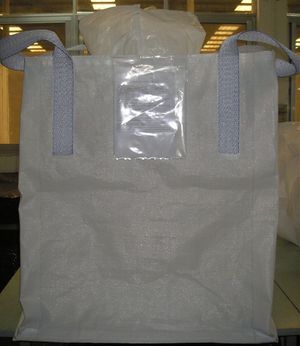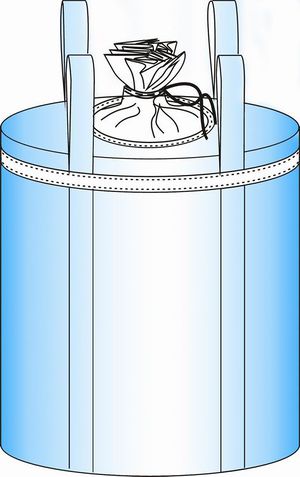Difference between revisions of "Anti Static Bulk Bags"
(Created page with "Category:Packages{{Knoppen}} <noinclude><!------------------------------------------------ * READ THIS FIRST * Only edit this page if you can improve the content. * Improper...") |
|||
| Line 7: | Line 7: | ||
* Please start editing this page after the /noinclude | * Please start editing this page after the /noinclude | ||
* -------------------------------------------------></noinclude> | * -------------------------------------------------></noinclude> | ||
[[File:AntiStaticBulkBag.jpg|thumb|right|Anti Static Bulk Bag]] | |||
[[File:ASbulkbag.jpg|thumb|right|Anti Static Bulk Bag]] | |||
"Anti Static Bulk Bags" are designed for use with materials and locations where it is essential to avoid the risks of electrostatic ignitions during handling. | |||
Electrostatic charges occur during the filling and discharging of an Anti Static Bulk Bag is dependent on electrical resistance of materials, speed of separation, electrical properties of filling equipment and triboelectric properties of the materials in direct contact. | |||
These charges accumulate at the top of the filled material and to the inner walls of the bulk bag. To prevent this hazard a groundable, or Type C, FIBC is the ideal solution. | |||
The conductivity of these units is usually provided by carbon tapes which are woven into the and the webbing. The body construction of the Anti Static Bulk Bag can be produced out of a flat or circular fabric, either coated or uncoated. | |||
== See also == | |||
* [[Anti Static Big Bags]] | |||
* [[Anti Static Containers]] | |||
* [[Anti Static Liners]] | |||
Revision as of 06:02, 20 August 2012
"Anti Static Bulk Bags" are designed for use with materials and locations where it is essential to avoid the risks of electrostatic ignitions during handling.
Electrostatic charges occur during the filling and discharging of an Anti Static Bulk Bag is dependent on electrical resistance of materials, speed of separation, electrical properties of filling equipment and triboelectric properties of the materials in direct contact.
These charges accumulate at the top of the filled material and to the inner walls of the bulk bag. To prevent this hazard a groundable, or Type C, FIBC is the ideal solution.
The conductivity of these units is usually provided by carbon tapes which are woven into the and the webbing. The body construction of the Anti Static Bulk Bag can be produced out of a flat or circular fabric, either coated or uncoated.

